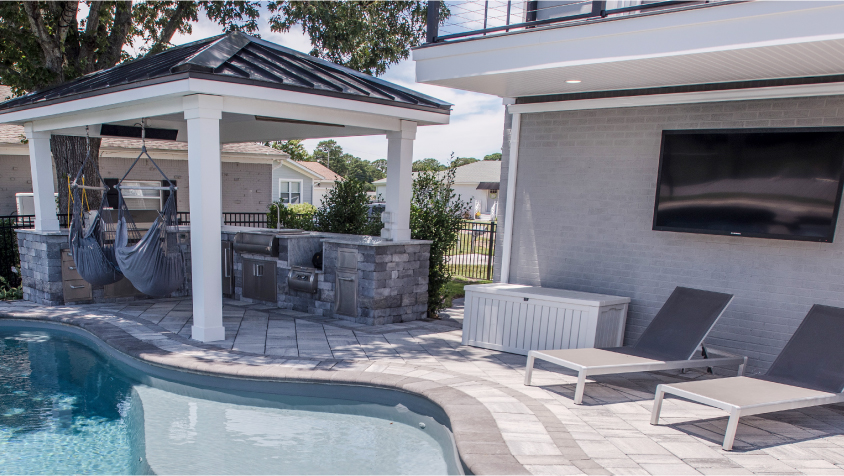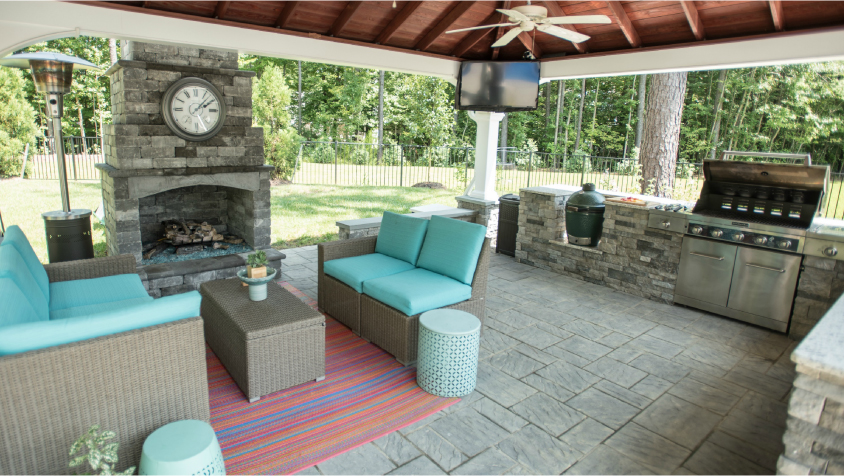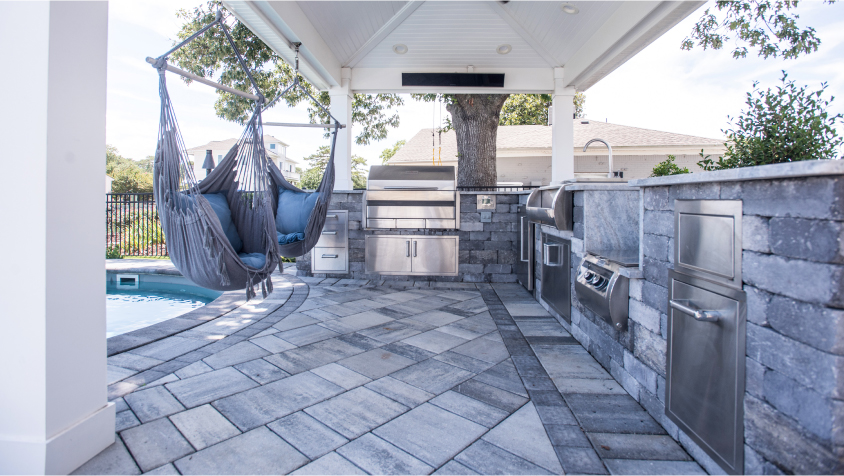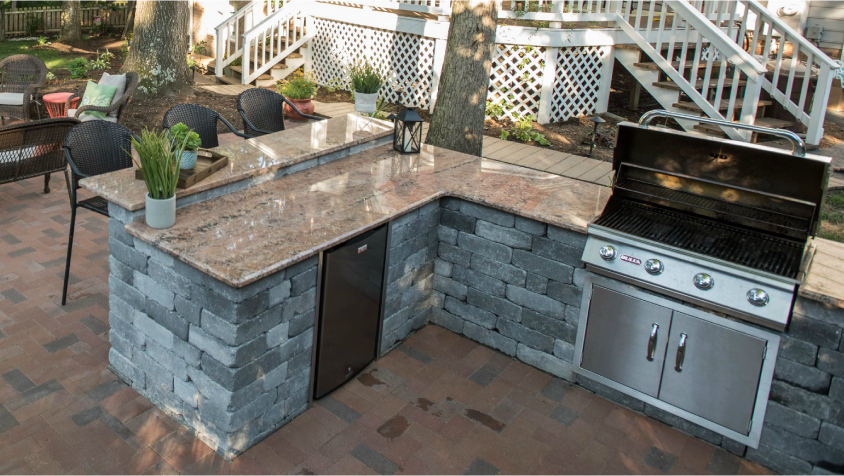Your client might be focused on choosing the right cut of steak or the best toppings for pizza, but you know that the success of their outdoor kitchen starts way before the menu is ever planned. Solid outdoor kitchen design is absolutely key to ensuring that your homeowner gets the most function and enjoyment out of their space, so keep a few time-tested principles in mind when starting your plans:
1. Set up the flow.
Planning for work and traffic flow should be the first step in any design process. An outdoor kitchen should follow the same basic design principles as an indoor kitchen, built around a work triangle for efficiency and safety.
Movement of guests should also be taken into account, making sure that the kitchen area flows into the entertaining space in an organized way – and ensuring that the chef gets to enjoy the party while working the grill!

2. Go for low-maintenance longevity.
An outdoor kitchen has to be built to withstand conditions that would make an indoor kitchen shudder – heat, cold, rain, ice, open flames, red-hot coals, and more. So choose appliances and materials that will be up to the task while complementing the overall look of the space. For instance, stainless steel countertops are virtually indestructible, clean easily, and bring a sleek industrial vibe to a kitchen.
Belgard has many products suited to withstand the rigors of outdoor kitchen use, and we even have a collection of pre-built kitchen components in a range of styles that allow for simple installation.

3. Keep the big picture in mind.
Outdoor kitchens have become a hot trend in recent years, but it’s important to consider the design of the existing home before beginning the design of the kitchen addition. Ideally, the outdoor living space will complement the house’s design and architecture to become a natural extension of the home.
To accomplish that, incorporate materials and small architectural details that tie the outdoor space into the overall look of the home. If there’s stonework on the house, consider a similar tone of paver; if the home incorporates natural wood elements, add a wooden pergola to the patio to help tie it into the design.

4. Build in the special features.
Now that outdoor living spaces are considered a true extension of the indoor space, homeowners are keen to see indoor amenities built into their outdoor “rooms.” Save yourself the headache of retrofitting electrical and gas lines by planning ahead for features like television, built-in speakers, fans and heaters, as well as plenty of outlets for everything from blenders and choppers to laptop and phone chargers.

5. Plan for prep and storage space.
The grill might get all the glory, but it can be argued that an outdoor kitchen’s true workhorse features are prep areas and storage space. For a successful build, you’re going to need plenty of both.
Having clear “landing areas” around grills, sinks, and cooktops is just as important outside as it is in your indoor kitchen. Build in plenty of space for ingredients, cutting boards, platters, colanders, etc., and ensure that grills and sinks have landing zones on both sides.
Storage is also key for all the equipment that goes along with outdoor cooking: pots and pans, dishes and plates, heat gloves and towels, wood chips, charcoal and more. Choose weathertight cabinetry with seamless rain gutters around the door and drawer openings.
Want more tips? See advice from Belgard design pros on topics like lighting, choosing appliances, space planning, and why you might want to run a gas line even if you don’t install gas appliances.

